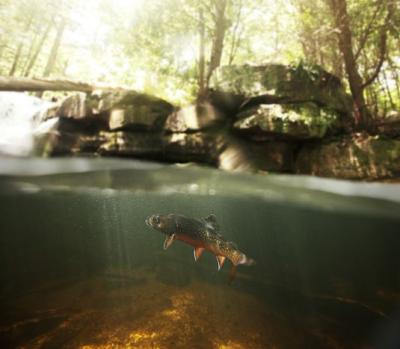Trout Stocking Secrets
Tips and Tricks For Fishing for Stocked Trout
A few things to keep in mind when trout fishing in streams:
- Stocking usually takes place a few net-fulls at a time, anywhere that a river
 and stream can be accessed from a stocking truck. Bridges, places where the road parallels the river, parks, boat ramps, and short hiking trails, all make good stocking locations. If you are not having success at one location, move to another.
and stream can be accessed from a stocking truck. Bridges, places where the road parallels the river, parks, boat ramps, and short hiking trails, all make good stocking locations. If you are not having success at one location, move to another. - Stocking locations can change. Sometimes a veteran hatchery worker or Conservation Officer will retire and their replacement may do things a little differently. If a CO's patrol area temporarily increases in size due to a vacancy, the number of waters they need to stock also increases, possibly preventing some waters from getting stocked as quickly as they have been in the past.
- Use the stocking report on our website as a guide. Once you know that stocking has been going on for a while, you will have much better luck if you go to a river and explore various locations than you will if you stay home and wait for your favorite area to show up on the stocking report.
- Fish do spread out. Often the pool right next to the bridge will be quickly fished out, but the larger pool about 300 yards down river may get less pressure and hold more fish. Don't overlook the more subtle holding area behind a large boulder in riffle habitat or downstream from the old bridge abutment that causes a break in the current. You will probably have more success if you keep moving up or down river than you will by continuously casting into the same spot.
- Some days fish just don't bite. That doesn't mean they weren't stocked. The fish may be stuffed from feeding on invertebrates that washed into the stream during a recent rain. A sudden temperature shift or change in weather may have affected their behavior, or you may have simply spooked the fish as you approached the bank. You can always try a different bait/lure/fly or come back another day.



